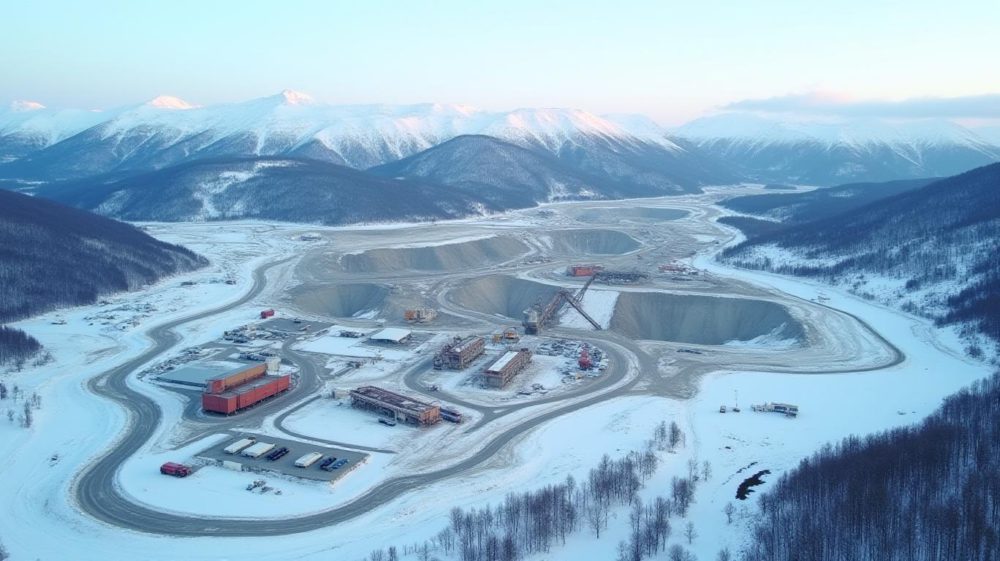Buried but Bountiful
Three stocks of wheat adorn the Saskatchewan coat of arms, a reminder of the province’s’deep connection to its agricultural roots, but it’s what’s beneath the surface that has become the real stroy of growth in the province.
Potash, that agricultural phenomenon that is helping address the world’s demand for reliable food resources in the midst of record high food prices, is now the province’s foundation to a financially sound future.
With more than a quarter of the world’s known potash resources located in southern Saskatchewan, these massive deposits left over from long-ago seas that once covered the Prairies, could supply the world with fertilizer for hundreds of years. Potash is one of those resources that tends to fly under the radar when discussing commodities. At least that was the case until last summer, when BHP Billiton made an unsuccessful – and unwelcome – bid to take over the Potash Corporation of Saskatchewan Inc. (PotashCorp) (TSX-POT), the world’s largest potash producer, to the tune of $40 billion. William Doyle, PotashCorp’s president and CEO, slammed the door on Billiton’s offer to purchase the company, and there were many who speculated that with the price of potash bottoming out, Doyle was making a huge error. Doyle’s refusal seemed almost audacious, especially in light of PotashCorp’s multi-billion dollar expansion projects while potash prices were almost a third of what they had been two years previous. But, according to Bill Johnson, the senior director of public affairs for PotashCorp, while the Canadian mining industry and political pundits were weighing in on what the bid meant to investors, it was business as usual for the operation.
“The one thing (the takeover attempt) has done is shine a very bright light on our company and our industry and made far more people aware of both the importance of fertilizer and the role it plays in the world food chain,” said Johnson. “And we certainly have much more recognition when we tell people we’re from PotashCorp than we might have had a year ago. When the bid was in place, we made a very conscious effort to not let those activities distract us from running our business because they are obviously related but also very separate activities.” PotashCorp’s expansion projects in Saskatchewan and New Brunswick (see Picadilly Mine story on page 30), collectively total more than $7.1 billion. Johnson said the scale of these activities is virtually unprecedented in the Canadian resource industry and is only rivalled in scope by the oilsands production in Alberta.
The greatest of PotashCorp’s expansions is the $2.8-billion expansion in Rocanville, in the southeastern corner of Saskatchewan. One of the chief accomplishments of the project will be sinking a set of two new shafts at the site-something that hasn’t been done in Saskatchewan for almost 40 years. (Johnson specified that a new shaft had been added to PotashCorp’s Lanigan operation in the mid-1980s but that was done without significant altering of the structures already in place.)
The new shafts will add 2.9 million tonnes of operational capacity. The expansion will also include the installation of a new mill and two product storage buildings with a total capacity of 526,000-tonnes. Johnson said the substantive work at Rocanville will be completed by 2013 and operating at capacity in 2014. On the ground, Steve Fortney is the general manager of the Rocanville plant. According to Fortney, the project is currently in full construction mode and is approximately 25 per cent completed. The most intensive piece of the puzzle is sinking the new shaft. “The new shaft is 16 kilometres, as the crow flies, from the existing shaft so we’re cutting from the current mining operations over to the new shaft,” said Fortney. “Even though the shafts are 16 kilometres away, it’s about 25 kilometres of cutting that we have to do to get from one shaft to the other. There are some geological problems underground, so we’ve gone around them to get to it.” The complete process of sinking the shafts will take about three years. First, 32 holes are drilled around the perimeter of the shaft site, and then three large freeze plants are brought in to freeze the ground – a process itself that Fortney said takes eight months. Then begins the laborious task of drilling, blasting, jackhammering and hauling materials out to sink the shaft. Right now, the shaft is approximately 130 metres down; at completion, the total depth will be 1,100 metres. Fortney said the biggest challenge in the process has been manpower. “The slowdown in the economy has actually been a benefit to us,” said Fortney. “It’s helped us a little bit with material availability and manpower availability, although Saskatchewan is a very busy place so there are a lot of contractors or workers that are from outside of Saskatchewan. That’s not something we look for, but the truth is that most people in Saskatchewan who want to work are working.” Housing those workers is obviously an issue. There are nearly 600 contractors on site with another 300 expected to be working on the project within three months. The number of workers is expected to cap out at 1,100. The population of Rocanville itself isn’t much larger.
Fortney said a 500-person camp has been built and will be expanded in the coming months, and other workers will be housed in Rocanville. But he said these challenges aren’t game changing. “PotashCorp’s expertise is in potash mining and milling,” said Fortney. “We’re pretty good at it. This is the fourth expansion in a row that PotashCorp has managed and there’s another two more on the go, so we’ve had a lot of experience.” In hindsight, two years after the market tumbled and six months after the takeover bid, potash is starting to gain in the markets and Johnson said all of the usual challenges of a major construction operation-especially the industry-wide difficulty of securing labour as demand grows-are being met head on. Johnson is satisfied that Doyle made the right decision. “Certainly, we’ve seen our business turn around significantly, as we thought it would,” said Johnson. “We’ve seen demand come back quite significantly and it’s testing the industry’s capacity to supply it. As far as our expansions are concerned, we were pretty confident throughout the Great Recession that staying the course was the right thing to do, and the marketplace is suggesting that we were correct.”





Comments